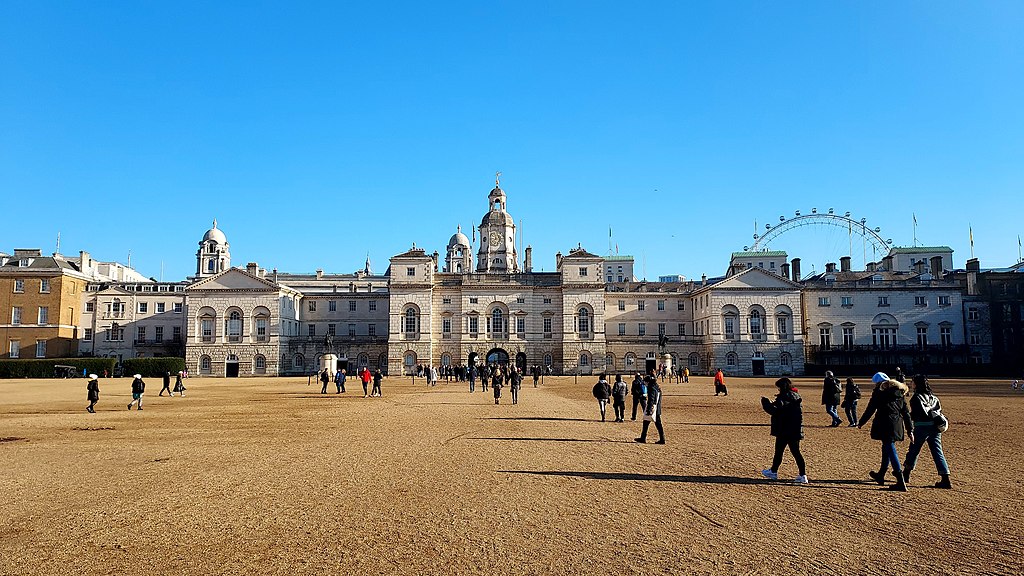In the 18th century, St. James’s Park, whilst open to privileged members of the public, was, in effect, the private grounds of the Royal Family. Outside space at the old palace of St. James’s was limited, so the park was the place to take exercise.
The only regular entrance to the park was the Horse Guards building and its arch, which was begun in 1750, to replace a building dating from the reign of King Charles II. The area was patrolled by guards, and access to the park was limited to those who had the privilege of entry. Initially access was controlled by password, but in 1775 a new method was introduced, the ivory pass (now replaced by the currently more ecologically sound plastic.) These marks of royal favour allowed carriages to pass through the arch and into the royal domain. Only the Sovereign was exempt from showing a pass. No pass, no entry.
So highly prized were these passes, that when Prime Minister Benjamin Disraeli was asked if he could arrange one for a petitioner he replied: “No, you may have a dukedom but not an ivory pass.” Today members of the Royal Family, senior government ministers and civil servants carry them. Going through the arch will save time, particularly if avoiding the often traffic-locked Trafalgar Square.
The one-time Rye resident, the late Alan Clark MP, mentions the passes in his diary, with an entry for the day that he was to be sworn of the Privy Council in 1991. After a brief rehearsal of the ceremony in the Privy Council office in Whitehall, the clerk said that it was time to leave for Buckingham Palace. Clark said that he would follow in his official car. The Privy Council clerk replied: “I’m afraid we may get separated. I’ve got a special ivory pass that lets me through Horse Guards arch.” Clark, who was then Minister of State at the Ministry of Defence countered with: “So’ve I.” It seems that when the clerk had been a senior official at the Home Office he had tried, clearly without success, to limit the number of passes in circulation.
Antique passes have survived and are on display in museums. They also occasionally appear on the auction block. One such was a large oval pass issued in the 1870s for the use of the Archbishop of Canterbury. It is engraved, “Horse Guards arch and Constitutional Hill gate. His Grace the Archbishop of Canterbury. On expiry of the holder’s term of office this ticket should be returned to the Secretary of State, Home Office.” It realised £950. Other passes were issued for such luminaries as Prince and Princess Christian of Schleswig-Holstein, Queen Victoria’s daughter and son-in-law, the Marquess of Lothian, the Dowager Marchioness of Cornwallis and Florence Nightingale. The modern, plastic passes have no name, just the Royal Cipher.
The pass of William Wellesley Pole, Master of the Royal Mint to both King George III and King George IV has survived in the museum collection of the Royal Mint. Formerly Chief Secretary to Ireland, he was also third Earl of Mornington and an elder brother to the first Duke of Wellington. He was responsible for British coins becoming perfectly produced works of art. Some said that he had his own face substituted for that of King George III on coins. He described the allegation as: “Of no consequence.” His initials do appear on some of the very best coins produced during his tenure. In 1817 he commissioned the Italian Benedetto Pistrucci to design the iconic motif of St. George and the dragon that still appears on the gold sovereign.
Image Credits: Johnathan Dann .



